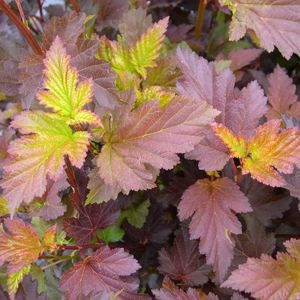
The classic American holly is native to southeastern Missouri.
She is truly one of Missouri’s most beautiful evergreen trees. Her strong upright posture, cheery red berries and spiny leaves create a perfect backdrop for a winter wonderland setting.
Her eventual broad base and her casually irregular shape develops over time. At maturity, these attributes lend an informal, pleasantly relaxed aspect to the landscape. Although her growth rate is considered slow in cultivation, she is dependable and long lived with minimum care.
When she is pruned hard regularly to a defined shape, she can become overstressed and lose some of her appeal. In a preferred setting with deep sandy soil, good drainage and adequate moisture she can potentially reach shade tree status. At a better than fair height of 35-45’ tall, she can carry a significant “wow” factor! If this is the goal, plan for her significant width as well! (Plant for at 10’ base minimum for adequate spacing. If a cultivar or selection is chosen, requirements may differ.
The American holly can be either male or female, but only the female will have berries. Both sexes must be present to ensure fruiting. The fruiting age varies with each tree. Berry production has been reported to occur as early as 3 years and as late as 9 years. The quantity of berries also varies from year to year. Individual tree’s production cycles normally vary from year to year. Also weather conditions, environmental stress and pollinator proximity are factors. Pruning can also decrease or eliminate fruiting as well. Choose trees at time of purchase with at least some fruit if berries are desirable for ornamentation or as food source for birds. Many song birds find holly berries very attractive!
Care Factor Rating: 2-3 This is a naturally steady grower but she does require regular watering year round in order to look and grow her best. Like most evergreens, expect to give her routine care during her establishment period. This is typically at least a minimum of 2 full years and possibly 3 years.
She must be watered regularly till established. Soil testing is recommended before planting to prepare the soil and periodically to be sure iron remains at an available level.
She does tolerate heavy pruning but does not perform her best under those conditions. Given optimal space and conditions and expect optimal results!
If allowed to grow naturally, her “care factor rating drops from 3 to 2 as pruning becomes minimal but her primary need for moisture will continue for the life of the tree for optimal appearance and performance. This makes proper placement critical! She can be very drought tolerant after she has established but is not as likely to look her best.
She is frequently listed as deer resistant however I would say “deer tolerant” is a better description. A well established tree suffering from some visibility issues because of natural pruning can be” prune managed” gently. Heavy and repeated browsing can greatly affect her aesthetic appeal. Fencing and deer repellants are frequently recommended.
By far, the most common cause of yellowing and leaf drop is the loss of older leaves that occurs every spring, just before, and during the development of new growth. So the next time you notice yellow leaves on your holly trees, take a moment to consider the time of year. If it’s springtime, chances are the condition is normal, seasonal and temporary, and no cause for concern.
Extreme winter cold, especially bouts of sub-zero temperatures, can cause yellowing in some years. On rarer occasions any of several leaf-spotting diseases may be the culprit. Their damage is more likely to be cosmetic, rather than life-threatening. More commonly, a lengthy period of drought during the heat of summer can contribute to considerable yellowing and premature loss of leaves.




























